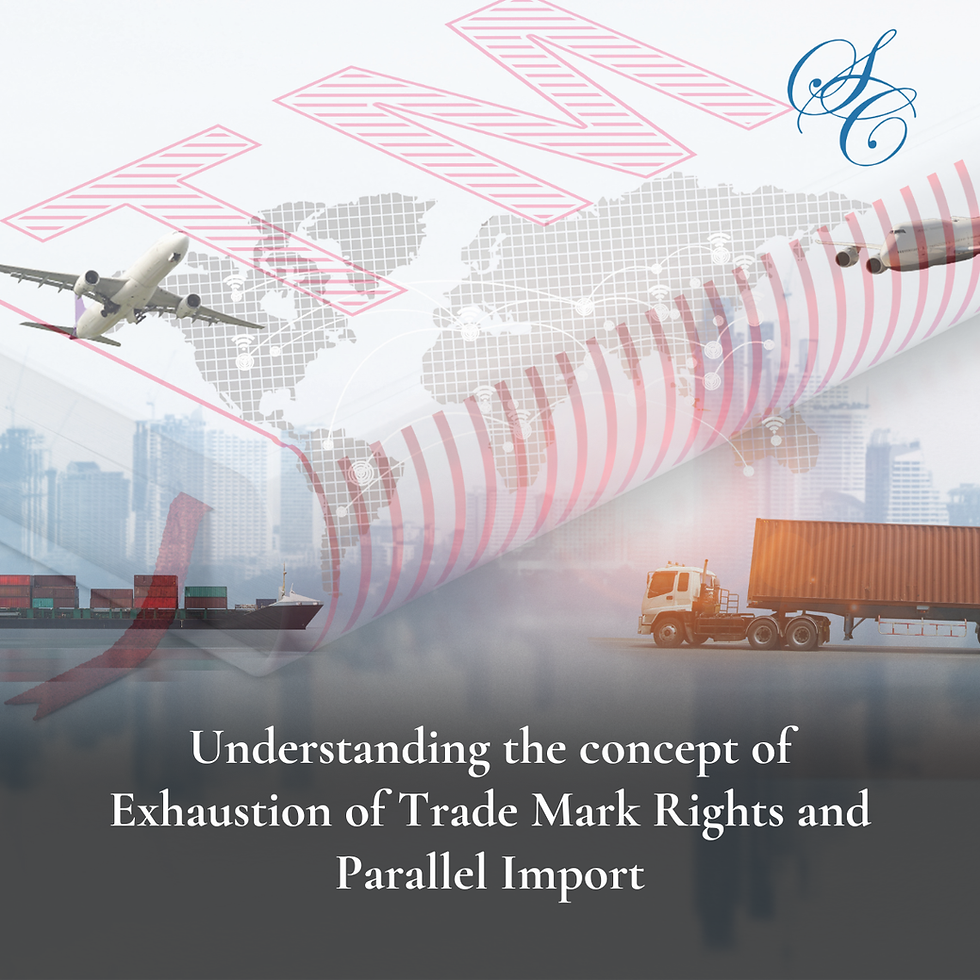The Indian Patent Office updates its examination guidelines for Computer Related Inventions (CRIs)
- SC IP
- Sep 24
- 5 min read

In July 2025, the Indian Patent Office (IPO) released comprehensive new guidelines for examining Computer Related Inventions (CRIs) (interchangeably referred to as ‘CRI Guidelines, 2025’ or ‘the new guidelines’).
Several CRI applications were being erroneously rejected due to an outdated and rigid examination framework, last updated in 2017 (CRI Guidelines, 2017). This approach was not only stifling innovations but was also adding pressure on the Indian courts to decide upon numerous rejections by the IPO of CRIs.
After considering the inputs from the various stakeholders, the IPO has published the CRI guidelines, 2025, with comprehensive sections addressing general CRIs, and emerging technologies.
A. Fundamental Changes from CRI Guidelines, 2017
Building on eight years of legal evolution and technological advancement, taking cue from the various decisions of the Indian courts on the subject and the worldwide examination standards and practice procedures for CRIs, the new guidelines introduce a paradigm shift that fundamentally alters how CRI patent applications are to be examined and prosecuted in India.
I. Hardware Novelty Clarification
The new guidelines explicitly state that novel hardware is not required for patentability and rejecting this as "a higher standard which lacks any basis in law". This removes a significant barrier that had been incorrectly applied in previous examinations.
II. Technical Effect Standard as Primary Criterion
The new guidelines establish that technical effect or technical contribution is sufficient for patentability, thereby aligning with global patent office practices. This represents a shift from form-based assessment to substance-based evaluation, where the focus shall now be on underlying technical contribution rather than claim format.
III. Critical Distinction - Implementation versus Algorithm
The new guidelines establish a key principle that applies across all CRI examinations:
For algorithms: The inventive feature must be the implementation, and as such not only the algorithm itself
Pure algorithms: Instructions determining data flow without substantial hardware changes are excluded
Patentable implementations: Algorithm instructions implemented through computer software resulting in technical effect or technical contribution
IV. Business Method - Absolute Exclusion
Unlike other Section 3(k) categories, business methods have absolute exclusion without "per se" qualifier:
No technical effect analysis applies to business methods in India
Absolute bar, without analysing technical advancement or contribution
Assessment focus: Whether application addresses business/administrative problems and solutions.
B. General Examination Guidelines for Computer Related Inventions (CRI)
The CRI guidelines, 2025 create clearer rules for how patent officers are to examine the patentability of computer inventions, thereby standardising assessment across patent offices and assisting both the controllers and patent professionals.
I. Novelty Assessment: The Seven Stambhas Approach
The CRI Guidelines, 2025 provide a systematic approach for novelty assessment using the following seven "Stambhas" (pillars in Indian architecture) as guiding principles:
Understanding the Claims - Analyse what the invention actually covers, and the applicant's claimed novelty.
Identify Relevant Prior Art - Collect all prior disclosures, publications, patents, or applications predating the filing date
Analyse the Prior Art - Compare technical details and features between the claimed invention and prior art, documenting similarities and differences
Determine Explicit and Implicit Disclosures - Examine whether prior art directly describes the invention or contains sufficiently similar elements
Assess Material Differences - Identify significant differences that indicate the claimed invention hasn't been previously disclosed
Verify Novelty of Complete Scope - Evaluate novelty based on the comprehensive scope of claims as a whole, not just individual elements
Document Analysis and Determination - Provide clear rationale for the novelty finding with specific references to prior art sections and reasoning.
II. Inventive Step Assessment: The Five-Step Approach
To check if your idea/ innovation is non-obvious to experts in the field, a 5-step test for assessing the inventiveness/non-obviousness has been laid down as guidance during examination:
Identify the Person Skilled in the Art - Define the competent inventor (as distinguished from a mere artisan) who would be working in the relevant technical field
Establish Common General Knowledge - Identify the relevant common general knowledge that the person skilled in the art would possess at the priority date of the invention
Define the Inventive Concept - Identify the inventive concept of the claim in question, or if that cannot readily be done, construe the claim to understand its technical contribution
Compare with Prior Art - Identify the differences, if any, exist between the matter cited as forming part of the "state of the art" and the inventive concept of the claim as construed
Assess Obviousness – Would an expert easily think of this invention based on what already exists, or does it show genuine creativity?
III. Technical Effect Assessment Framework (Subject Matter Eligibility Test)
Central to the new guidelines is the systematic evaluation of technical effects incorporating jurisprudential developments from various landmark decisions from Indian courts on CRIs and the attempt to harmonize examination standards with practices of global patent offices. Accordingly, following instances highlighting technical effect being key to assessing eligibility of a CRI have illustratively been provided:
User Interface Test: Technical effects must go "beyond the usual user interface" and enhance computational ability.
Hardware-Software Integration Recognition: Technical solutions integrating operations into hardware setups can transform general-purpose computing into specialized apparatus.
Real-World Application Emphasis: Mathematical transformations must provide practical hardware configurations with demonstrable technical improvements.
Technical Contribution Beyond Incidental Effects: Technical effects must be substantial system performance improvements, not merely theoretical enhancements.
IV. Clarity on Industrial Applicability
The new guidelines maintain the standard requirement that inventions must be "capable of being made or used in an industry". For most CRI inventions, this requirement is readily satisfied as computer-related technologies have clear industrial applications. Examples include software controlling manufacturing processes, AI systems for medical diagnostics, blockchain networks for supply chain management, and quantum algorithms for cryptographic applications.
V. Means Plus Function Claims Guidance
The new guidelines provide specific requirements for means-plus-function claims in CRIs:
Claims must have structural features disclosed in the specification.
Claims are rejected if the invention can only be performed through software.
Where no structural features are disclosed and specification supports only software implementation, such means are considered computer programme per se.
C. Specific guidelines related to Emerging Technologies [Artificial Intelligence (AI), Machine Learning (ML) and Deep Learning (DL), Blockchain, & Quantum Computing]
While the general examination framework applies to all CRIs, emerging technologies require specialized consideration due to their unique technical characteristics and enhanced disclosure requirements. The new guidelines accordingly provide specific guidance on the following -
I. AI Inventorship
The new guidelines establish clear distinctions important for modern AI development:
AI-generated inventions: Not patentable as AI cannot qualify as a "person", either ‘natural’ or ‘legal’. Only ‘persons’ can be inventors under Indian law
AI-assisted inventions: Patentable if they meet all standard patentability criteria and additionally demonstrate technical effect through their inventive applications to overcome exclusions under Section 3(k), with clear human creative input
II. Enhanced Requirements for sufficiency of disclosure:
When dealing with AI/ML/DL/Blockchain/Quantum Computing related inventions, the specification must disclose:
Algorithmic implementations with sufficient detail for reproduction
Training methodologies including data preprocessing and validation techniques
Architectural specifications detailing system components and interactions
Performance validation metrics and benchmarking criteria
Dataset characteristics including size, quality, and relevance parameters
Technical implementation details enabling skilled person to work the invention.
While there exist potential areas for improvement, the CRI guidelines, 2025 mark a significant milestone, establishing a clear and forward-looking foundation that will foster innovation and support the growth of India’s technology sector for years to come.
Read the CRI Guidelines, 2025 as published




Comments